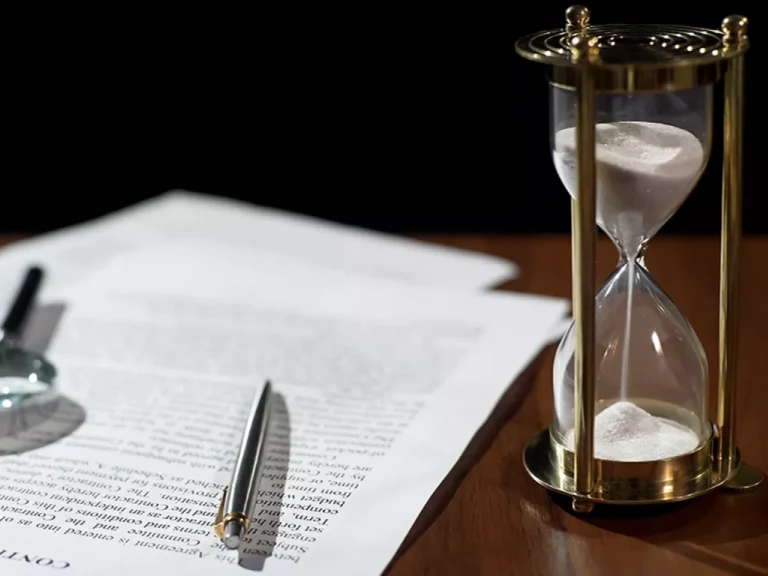On this page
What's next
Earn a high-yield savings rate with JG Wentworth Debt Relief
Collection Agency Dispute Letter Template
by
JG Wentworth
•
July 3, 2024
•
6 min

In today’s world, debt collection agencies have become increasingly common. Whether you owe money for medical bills, credit card debt, or even student loans, it’s crucial to understand how to handle these situations effectively. One of the most important tools at your disposal is a dispute letter. If you find yourself in a situation where you need to dispute a debt, a dispute letter can be a powerful tool to fight back against unfair or inaccurate claims made by collection agencies. In this article, we’ll explore the ins and outs of creating a collection agency dispute letter template and offer tips on how to make it as effective as possible.
Download Collection Agency Dispute Letter Template
Download Now!The information is provided for educational and informational purposes only. Such information or materials do not constitute and are not intended to provide legal, accounting, or tax advice and should not be relied on in that respect. We suggest that You consult an attorney, accountant, and/or financial advisor to answer any financial or legal questions.
Understanding the basics of a dispute letter
So, what exactly is a dispute letter? Simply put, it is a written communication sent to the collection agency, outlining your concerns and disputing the validity of the debt. The dispute letter serves as an official record of your objections and provides the collection agency with the opportunity to correct any errors or provide validation for the debt they are pursuing. When it comes to disputing a debt, it’s important to understand the significance of a well-crafted dispute letter. Not only does it allow you to assert your rights as a consumer, but it also serves as a crucial document that can protect your interests in legal proceedings or negotiations.
Key elements of a collection agency dispute letter
When crafting your dispute letter, it’s important to include certain key elements to ensure its effectiveness. These elements will help you convey your concerns clearly and provide the collection agency with the necessary information to address your dispute.
Identifying information
Your dispute letter should start with proper identification. Include your name, address, and any account numbers or reference numbers associated with the debt. This information helps the collection agency identify you and locate your account quickly.
Account details
Provide detailed information about the account in question. Include the name of the original creditor, the date the account was opened, and any relevant account numbers or identifiers. This information helps establish the context of your dispute and ensures that the collection agency is working with accurate information.
Disputed amount and charges
Clearly state the specific amount you are disputing and provide a breakdown of any charges or fees that you believe are incorrect or unjust. Be as detailed as possible and provide any documentation or evidence that supports your claim. This section is crucial, as it forms the core of your dispute and gives the collection agency a concrete basis for addressing your concerns.
Writing an effective dispute letter
Now that you understand the basic elements your dispute letter needs to contain, here are a couple other things to keep in mind when writing it…
State your dispute clearly
It’s important to be concise in your communication. Clearly state the reasons why you believe the debt is invalid or inaccurate, providing any supporting evidence or documentation that you may have.
Use professional language
Remember, a dispute letter is not just a means of expressing your frustration or dissatisfaction with the collection agency. It is a strategic tool that can help you protect your rights and ensure fair treatment in the debt collection process. While it’s important to express your concerns assertively, it’s equally important to remain professional in your tone and language. Avoid using offensive or derogatory language, as it can undermine the effectiveness of your letter. Stick to the facts and present your case in a respectful manner. By presenting a well-reasoned argument, you increase the chances of the collection agency taking your concerns seriously and resolving the issue in your favor.
Request debt validation
One of the most important purposes of a dispute letter is to request debt validation from the collection agency. Debt validation refers to the process of requesting proof that the collection agency has the right to collect the debt and that the amount claimed is accurate. Clearly state your request for debt validation and provide a timeline for the collection agency to respond.
Legal considerations when drafting a dispute letter
When drafting your dispute letter, it’s important to be aware of the legal considerations that may come into play. Familiarize yourself with the following key legal concepts to ensure that your dispute letter is within the boundaries of the law.
Fair Debt Collection Practices Act (FDCPA)
The Fair Debt Collection Practices Act (FDCPA) is a federal law that governs how collection agencies can legally pursue debts. It provides certain rights and protections to consumers, including the right to dispute a debt. Make sure your dispute letter complies with the requirements set forth by the FDCPA to ensure that you are protected under the law.
Statute of limitations on debt
Each state has its own statute of limitations that sets a time limit for how long a debt can be legally pursued. Research the statute of limitations in your state and include this information in your dispute letter if applicable. This can be an important legal argument to make if the debt is beyond the statute of limitations.
Tips for sending your dispute letter
Once you have drafted your dispute letter, it’s crucial to follow proper procedures when sending it to the collection agency. Here are some tips to keep in mind:
Certified mail and return receipt
Send your dispute letter via certified mail with a return receipt requested. This provides evidence that your letter was delivered to the collection agency and creates a record of your communication.
Keep copies of all correspondence
Make copies of your dispute letter and any related documents before sending them. Keep these copies in a safe place for future reference. Additionally, keep track of any correspondence or communication you receive from the collection agency in response to your dispute letter. Having an organized paper trail of the entire process can only help your cause should you need to reference anything down the line.
In conclusion
In conclusion, a collection agency dispute letter is a powerful tool that can help you assert your rights, contest unfair practices, and protect your interests. By understanding the basics of a dispute letter, including its key elements and legal considerations, and following best practices when writing and sending your letter, you can create an effective template that will serve you well in your dealings with collection agencies. Remember, knowledge is power, and by arming yourself with the right information, you can navigate the sometimes-daunting world of debt collection with confidence.






